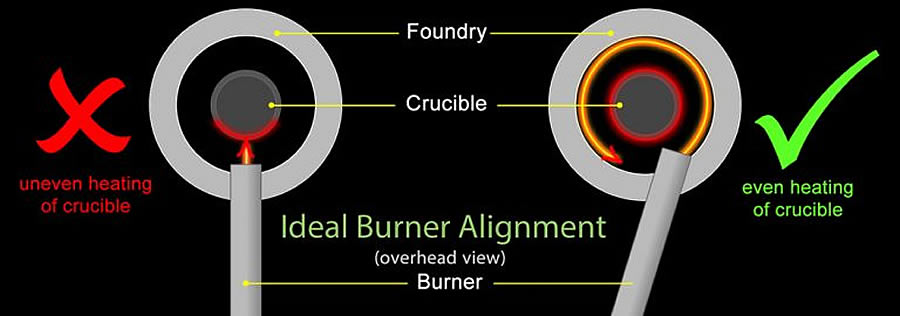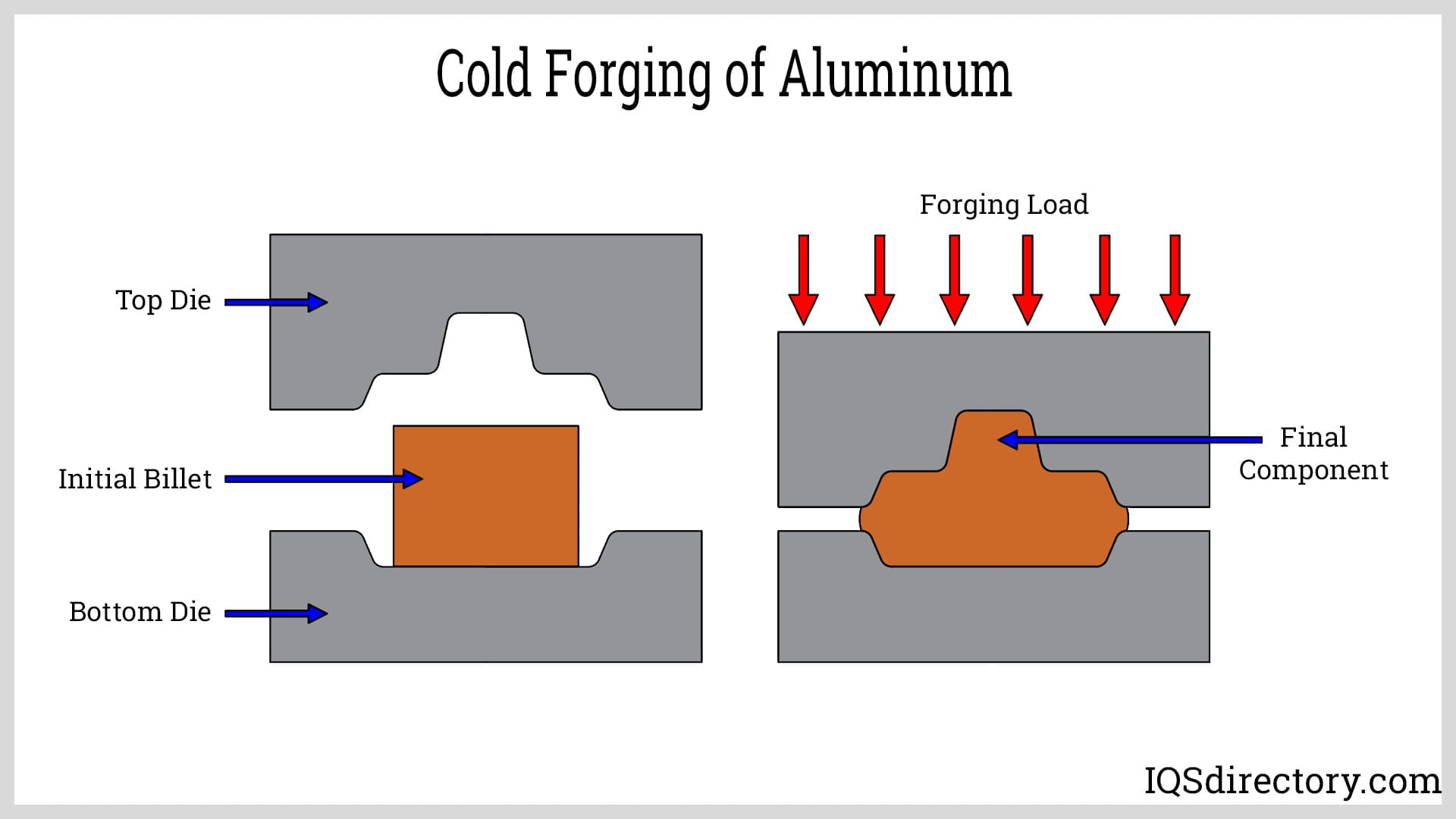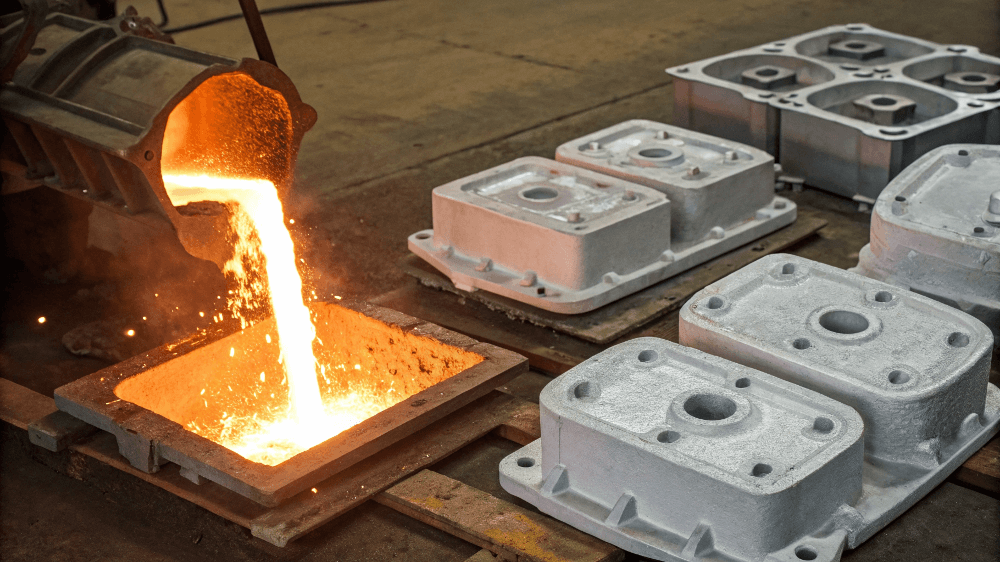A Comprehensive Overview to the Techniques Used in Aluminum Foundry Procedures
Aluminum Foundry procedures use different casting techniques, each with unique processes and applications. Understanding these techniques is vital for enhancing production and attaining preferred product residential or commercial properties. From sand casting to pass away casting, the choices offered can considerably impact effectiveness and cost. As modern technology developments, so as well do these techniques, triggering a closer exam of their restrictions and advantages. The effects of these growths require more exploration.
Overview of Aluminum Spreading Techniques
Aluminum spreading techniques incorporate a range of techniques made use of to form molten Aluminum right into preferred forms. These methods are critical in the manufacturing and design markets, offering convenience and efficiency. Major methods include die casting, which utilizes high-pressure to infuse Aluminum into mold and mildews for precision parts, and gravity casting, where molten Aluminum is put into mold and mildews drunk of gravity, permitting larger, less complex shapes. Investment casting, one more method, entails developing a wax pattern covered in ceramic, providing high dimensional precision for detailed styles. Furthermore, permanent mold and mildew spreading makes use of reusable molds, enhancing production effectiveness and minimizing waste. Each technique satisfies specific applications, balancing aspects such as price, production quantity, and material properties. As markets advance, innovations in these casting methods remain to boost the quality and performance of Aluminum elements, positioning them as necessary procedures within modern production.
Sand Spreading: Process and Applications
Sand spreading is a commonly made use of method in the Foundry sector, understood for its simpleness and adaptability. Aluminum Foundry. This process includes producing a mold and mildew from a combination of sand and a bonding agent, normally clay. The mold is created around a pattern, which is a reproduction of the wanted end product. When the mold is prepared, liquified Aluminum is put right into the dental caries, allowing it to strengthen into the desired form
Among the main advantages of sand casting is its capacity to generate big components and complex geometries, making it ideal for various applications, including vehicle components, equipment parts, and attractive things. Furthermore, sand casting can fit various Aluminum alloys, improving its adaptability. The process is affordable for low to medium production runs, as it does not require expensive tooling. Generally, sand spreading continues to be an essential method in Aluminum Foundry operations because of its effectiveness in meeting diverse production needs.
Pass Away Spreading: Benefits and Limitations
While die casting is often compared to sand casting, it provides unique benefits and constraints that make it ideal for particular applications in the Aluminum Foundry market. One significant benefit of die spreading is its ability to produce complex forms with high dimensional accuracy and exceptional surface finish. This procedure is particularly advantageous for automation, as it enables faster cycle times and minimized labor expenses. Furthermore, die casting lessens material waste, enhancing general efficiency.
Pass away spreading additionally has limitations. The preliminary tooling prices are fairly high, making it less feasible for small manufacturing runs. The process is finest matched for metals with reduced melting factors, which can limit product selections. Pass away casting is likewise minimal concerning the maximum size of the parts generated, as larger elements might need alternative techniques. Stabilizing these variables is crucial for establishing the proper application of die casting in the Aluminum Foundry sector.
Financial Investment Spreading: Accuracy and Information
Investment spreading is a highly precise manufacturing process that enables elaborate styles and fine details in Aluminum components. This method provides substantial benefits, including boosted dimensional accuracy and lowered machining requirements. Its applications cover various markets, highlighting its convenience and performance in producing complicated components.
Process Overview
The financial investment casting process is renowned for its capability to create high-precision elements and complex forms. This approach begins with creating a wax pattern, which is after that covered with a ceramic covering. When the covering hardens, the wax is thawed away, leaving an accurate cavity for the molten steel. The Aluminum is put into this cavity, capturing the fine information of the initial pattern. After cooling down, the ceramic covering is escaped, revealing the actors element. Any kind of required finishing work, such as machining or surface area therapy, is done to achieve the preferred specifications. This procedure is specifically beneficial for complex geometries that are challenging to accomplish through traditional spreading methods, making sure both high quality and accuracy in the last item.
Advantages of Accuracy
Precision in financial investment casting supplies considerable benefits, making it a preferred choice for making complex parts. This method makes it possible for the manufacturing of detailed forms with limited tolerances, reducing the demand for extensive machining and lessening material waste. The capacity to attain high dimensional precision equates to a remarkable fit and surface, boosting the general quality of the last item. Furthermore, financial investment casting enables the unification of great details, which is important for components requiring detailed styles. The procedure also sustains the usage of different Aluminum alloys, further expanding its applicability. On the whole, the precision used by financial investment casting not just improves the functional and visual features of elements but additionally adds to improved effectiveness in manufacturing cycles.
Applications in Market
While several producing procedures exist, investment spreading sticks out for its convenience throughout various industries, specifically in industries demanding high precision and thorough elements. This spreading method is commonly used in aerospace, automotive, and medical fields, where intricate layouts and address tight resistances are important. As an example, aerospace elements benefit from investment casting's ability to create complex geometries that reduce weight without sacrificing structural honesty. Likewise, the automobile industry employs this technique to produce engine parts that need resilience and accuracy. In the medical industry, investment spreading enables the production of surgical instruments and implants that have to fulfill stringent quality criteria. Overall, investment casting greatly improves product efficiency and integrity, making it an invaluable technique in modern manufacturing applications.
Contrast of Casting Approaches
 The contrast of casting approaches reveals distinctive advantages and applications throughout different techniques - Aluminum Foundry. Sand spreading is frequently celebrated for its adaptability and cost-effectiveness, while die spreading is identified for its performance and precision in creating high quantities. Financial investment spreading, formerly discussed, showcases its unique capability to develop intricate styles, additionally highlighting the diverse abilities of each approach in Aluminum Foundry procedures
The contrast of casting approaches reveals distinctive advantages and applications throughout different techniques - Aluminum Foundry. Sand spreading is frequently celebrated for its adaptability and cost-effectiveness, while die spreading is identified for its performance and precision in creating high quantities. Financial investment spreading, formerly discussed, showcases its unique capability to develop intricate styles, additionally highlighting the diverse abilities of each approach in Aluminum Foundry proceduresSand Spreading Advantages
Sand spreading offers a number of advantages when compared to various other casting methods, making it a recommended selection in numerous production applications. Among the key benefits is its affordable, as the products needed, such as sand and metal, are easily offered and economical. Furthermore, sand casting permits better style flexibility, making it possible for the production of complex shapes and big components that may be testing to attain with various other techniques. The procedure additionally fits a large range of steel alloys, consisting of Aluminum, enhancing its adaptability. Additionally, sand mold and mildews can be conveniently repaired or customized for subsequent casts, making it reliable for both huge and tiny production runs. On the whole, these advantages contribute to sand spreading's popularity in the Foundry market.
Die Spreading Techniques
Pass away casting strategies stick out as a very effective approach for creating steel components, specifically when contrasted to traditional spreading approaches like sand spreading. This process includes forcing liquified Aluminum right into a mold under high stress, leading to specific measurements and a smooth surface finish. Unlike sand casting, which requires comprehensive ending up job, pass away casting decreases post-production processing, improving total efficiency. Additionally, die spreading can suit complicated geometries, permitting complex styles that would be challenging to accomplish through various other techniques. The speed of manufacturing is another benefit; die spreading can produce large quantities of components in a much shorter timeframe. Generally, the mix of performance, accuracy, and design adaptability makes pass away casting a recommended option in modern Aluminum Foundry operations.
Financial Investment Casting Applications
Investment casting, frequently described as lost-wax spreading, uses distinctive advantages over other casting approaches, particularly with respect to precision and surface finish. This strategy enables the production of complex forms and great details that are hard to accomplish with sand or die casting. In addition, financial investment spreading generates components with premium dimensional precision, lowering the requirement for substantial machining. Its adaptability makes it suitable for various sectors, consisting of aerospace, automobile, and medical devices, where high-grade parts are crucial. Contrasted to die casting, which can be limited by mold and mildew intricacy, financial investment casting masters generating intricate geometries without compromising architectural stability. As a result, the choice of investment spreading comes to be increasingly positive for applications demanding high performance and integrity.
Quality Assurance in Aluminum Foundry Procedures
Exactly how can Aluminum foundries guarantee the highest high quality in their products? Implementing strenuous top quality control steps is essential. Shops commonly start by developing clear specifications for the Aluminum alloys used, ensuring they satisfy industry criteria. Constant tracking throughout the melting and pouring procedures aids recognize any kind of discrepancies from wanted chemical structures.
Aesthetic inspections and non-destructive testing approaches, such as ultrasonic or X-ray exams, are frequently employed to find internal flaws or disparities in castings. Additionally, statistical process control methods track manufacturing data, permitting very early recognition of possible concerns.
Routine training and qualification of workers in quality control practices are important for keeping high criteria. Finally, executing comments loopholes from consumers can assist foundries refine their processes and improve product quality. By sticking to these techniques, Aluminum shops can consistently supply high-quality items that fulfill or surpass consumer expectations.
Future Trends in Aluminum Casting Technology
Improvements in Aluminum spreading innovation are positioned to reshape the sector landscape, building upon recognized quality assurance methods. Technologies such as additive manufacturing and wise Foundry solutions are emerging, allowing boosted style versatility and reduced waste. The assimilation of expert system and machine understanding in process tracking allows for real-time changes, boosting performance and product top quality.
Sustainability continues to be a crucial focus, with an emphasis on reusing scrap Aluminum and minimizing energy intake. Advanced alloy formulations are being created to maximize performance while reducing ecological impact. The adoption of automated systems, including robotics for managing and putting, assures to boost workplace safety and accuracy.
Electronic doubles are acquiring grip, permitting for online simulations that assist in far better decision-making and anticipating upkeep. As these fads progress, they will likely create a much more effective, lasting, and technically progressed Aluminum casting industry, setting brand-new requirements for high quality and performance.
Frequently Asked Questions
What Precaution Should Be Absorbed Aluminum Foundry Procedures?
In Aluminum Foundry operations, essential safety and security steps consist of personal safety equipment, correct air flow, regular training, threat evaluations, emergency preparedness, and adherence to procedures to alleviate dangers connected with liquified steel and hefty machinery.
Just How Is Recycled Aluminum Made Use Of in Foundry Processes?
Recycled Aluminum is generally used in Foundry processes to lower ecological effect and production go to the website costs. It goes through melting and refining, allowing producers to produce premium products while conserving energy and lessening waste in the Aluminum lifecycle.
What Tools Is Essential for Aluminum Spreading?
Necessary devices for Aluminum casting consists of heating systems for melting, mold and mildews for shaping, putting ladles, cooling down systems, and finishing tools. Each element plays an essential role in making certain the efficiency and top quality of the casting procedure.
How Do Environmental Rules Effect Aluminum Foundries?
Environmental policies greatly impact Aluminum foundries by imposing limitations on discharges and waste monitoring. Conformity requires financial investment in cleaner modern technologies, which can increase functional costs but ultimately advertises sustainability and minimizes the environmental impact of the market.

What Are Usual Flaws in Aluminum Castings and Their Solutions?
Typical flaws in Aluminum castings include check out this site porosity, shrinking, and surface blemishes. Solutions involve optimizing thaw quality, controlling cooling prices, and using correct mold and mildew style, guaranteeing far better stability and efficiency of the last cast items.
 Significant strategies include die spreading, which uses high-pressure to inject Aluminum into molds for precision parts, and gravity spreading, where liquified Aluminum is poured into mold and mildews under the impact of gravity, enabling for larger, much less complicated forms. While die casting is commonly compared to sand casting, it offers distinctive benefits and restrictions that make it suitable for particular applications in the Aluminum Foundry sector. Sand spreading is usually celebrated for its flexibility and cost-effectiveness, while die spreading is identified for its effectiveness and precision in producing high quantities. Pass away spreading methods stand out as an extremely effective technique for producing metal parts, particularly when compared to traditional casting methods like sand spreading. Contrasted to pass away casting, which can be limited by mold complexity, financial investment spreading succeeds in generating complex geometries without jeopardizing architectural honesty.
Significant strategies include die spreading, which uses high-pressure to inject Aluminum into molds for precision parts, and gravity spreading, where liquified Aluminum is poured into mold and mildews under the impact of gravity, enabling for larger, much less complicated forms. While die casting is commonly compared to sand casting, it offers distinctive benefits and restrictions that make it suitable for particular applications in the Aluminum Foundry sector. Sand spreading is usually celebrated for its flexibility and cost-effectiveness, while die spreading is identified for its effectiveness and precision in producing high quantities. Pass away spreading methods stand out as an extremely effective technique for producing metal parts, particularly when compared to traditional casting methods like sand spreading. Contrasted to pass away casting, which can be limited by mold complexity, financial investment spreading succeeds in generating complex geometries without jeopardizing architectural honesty.